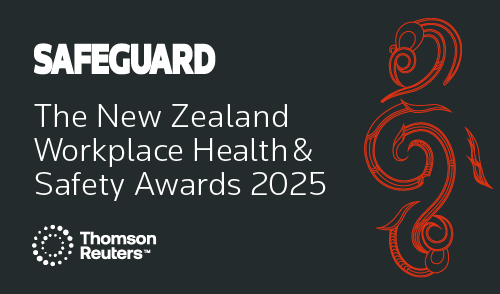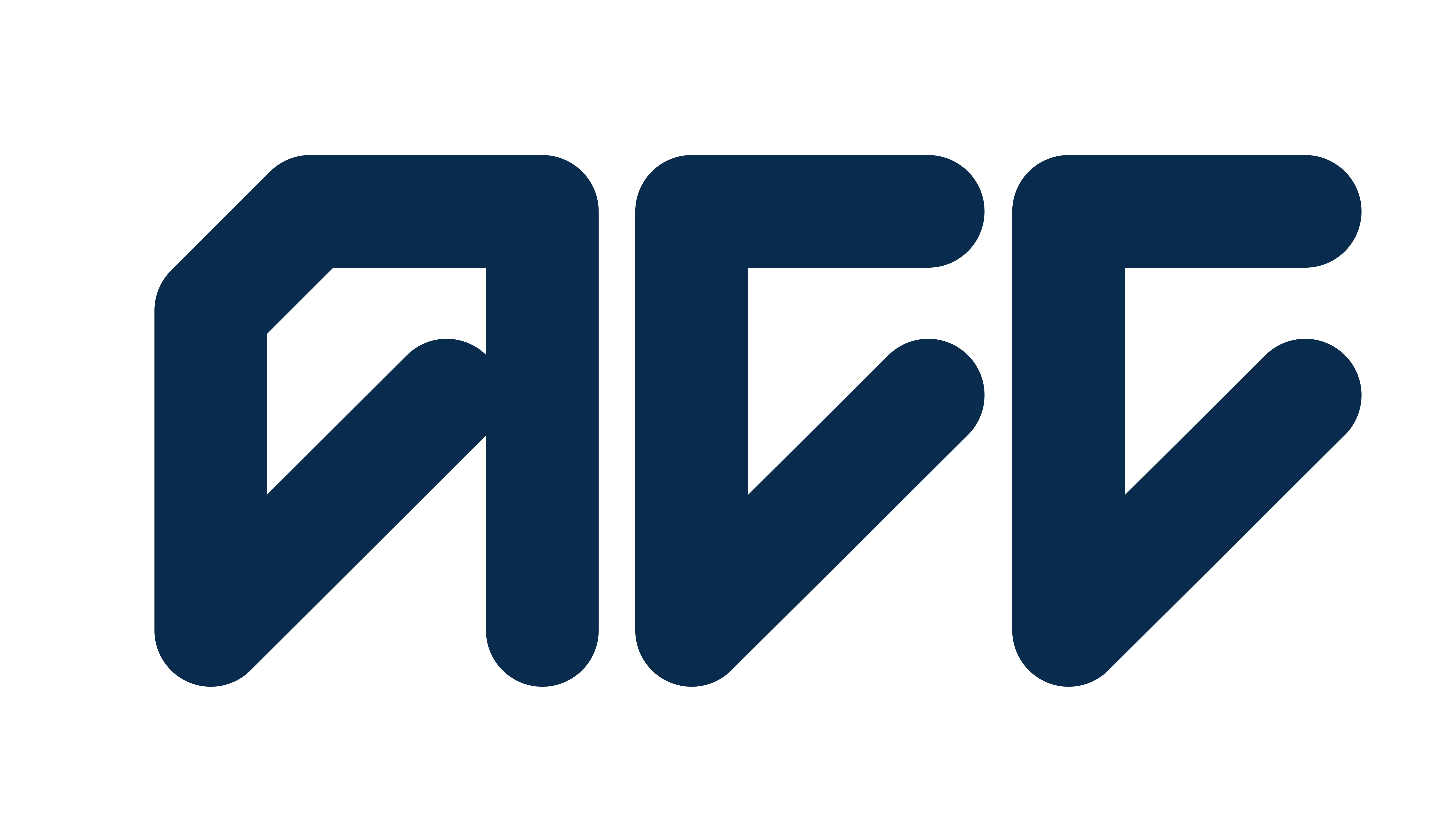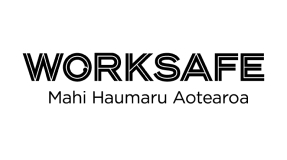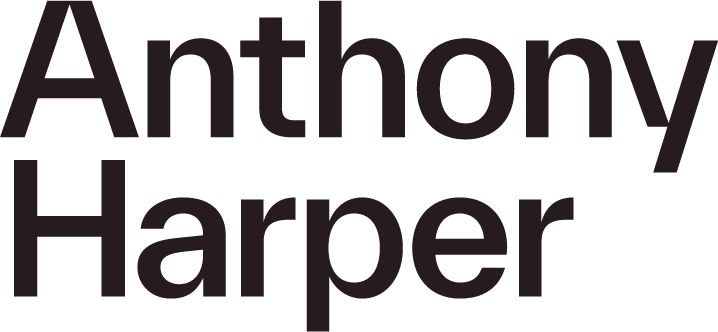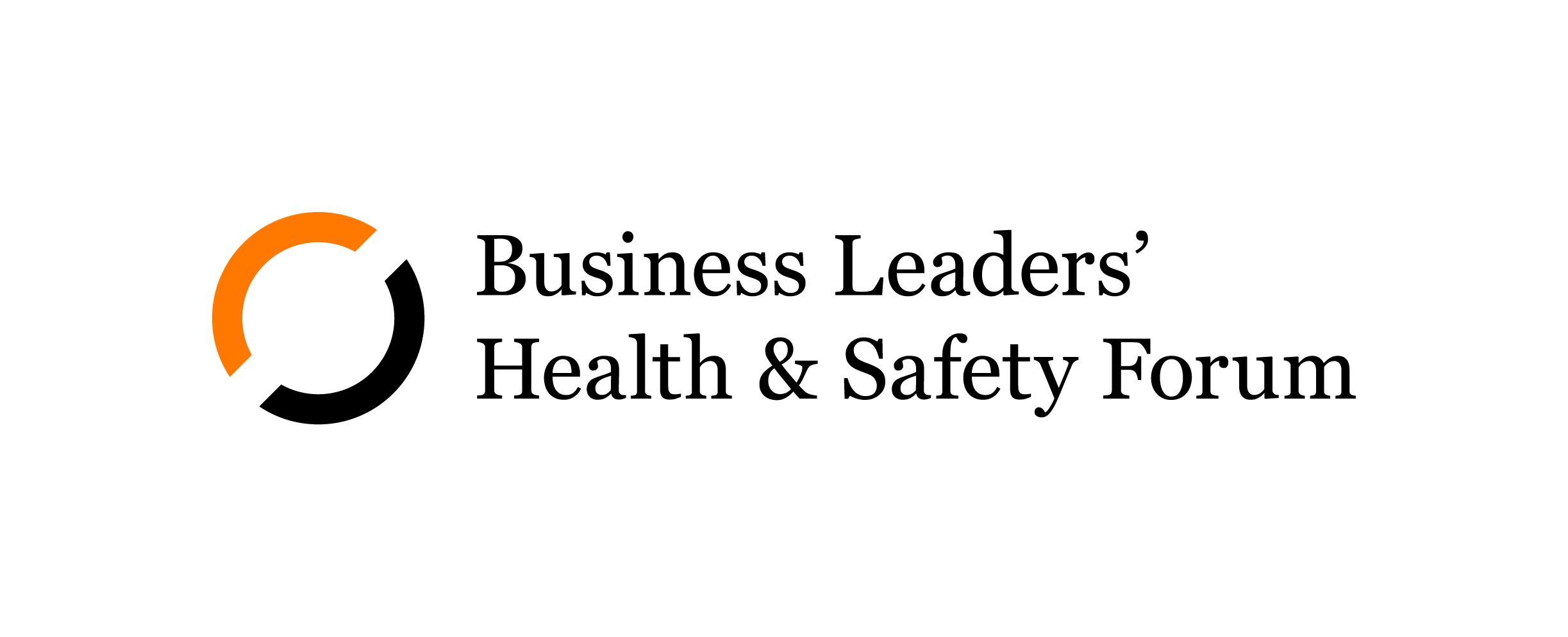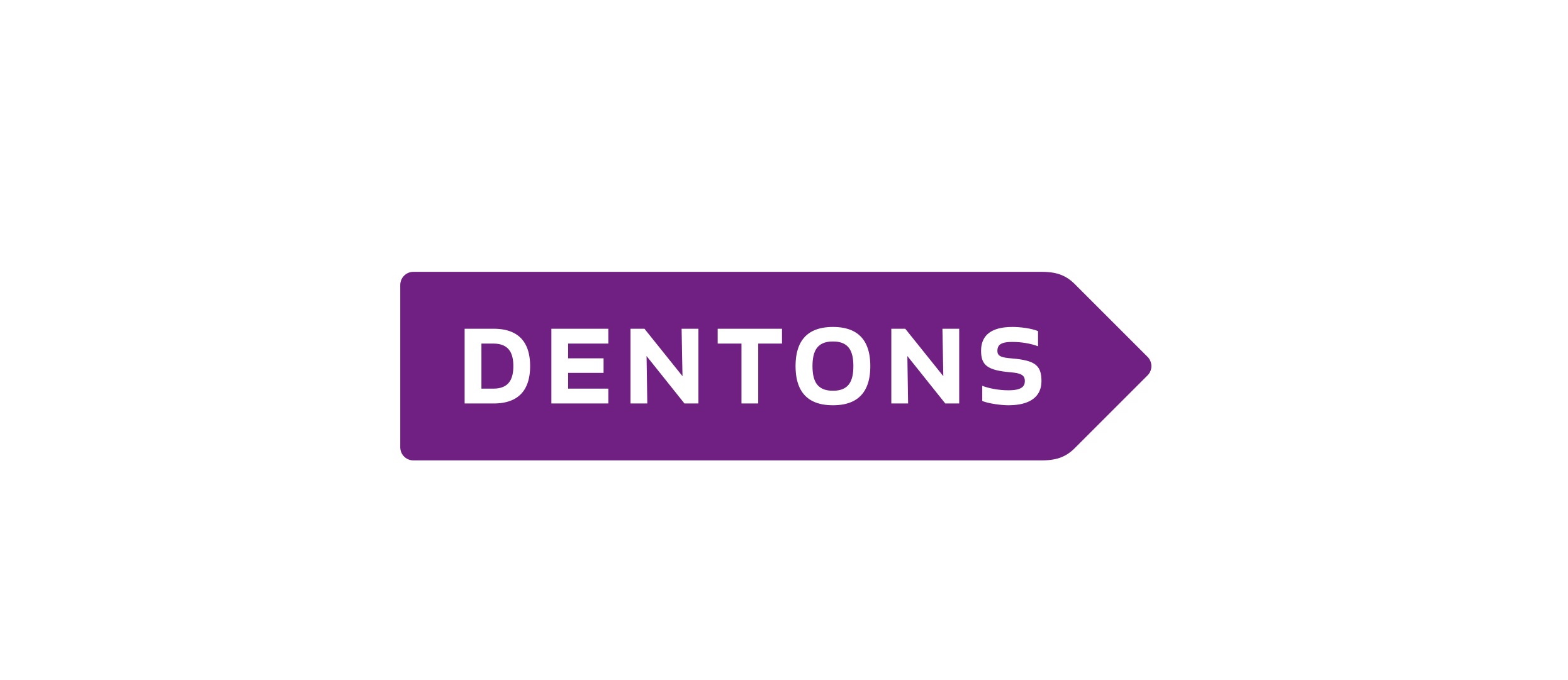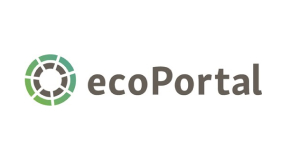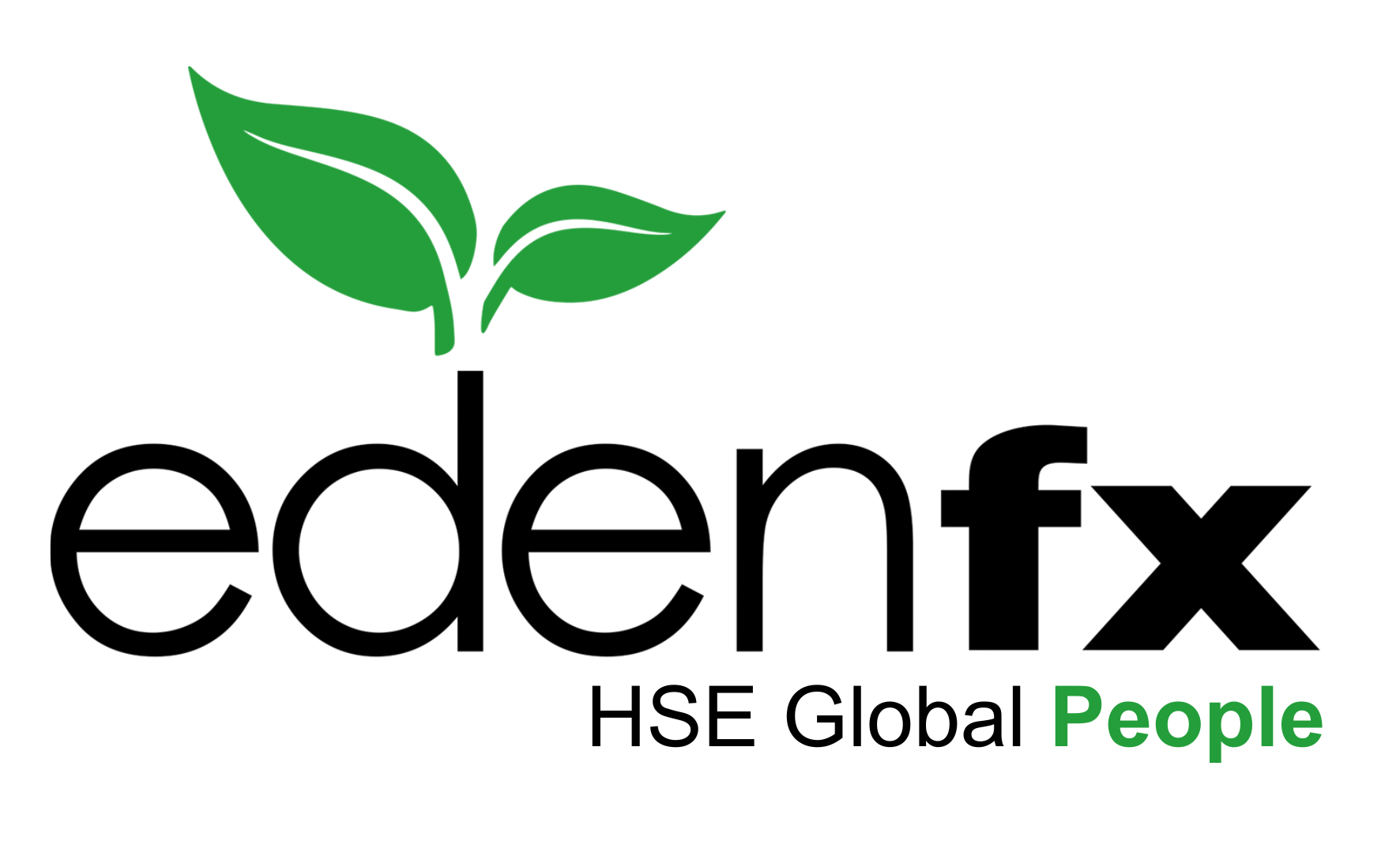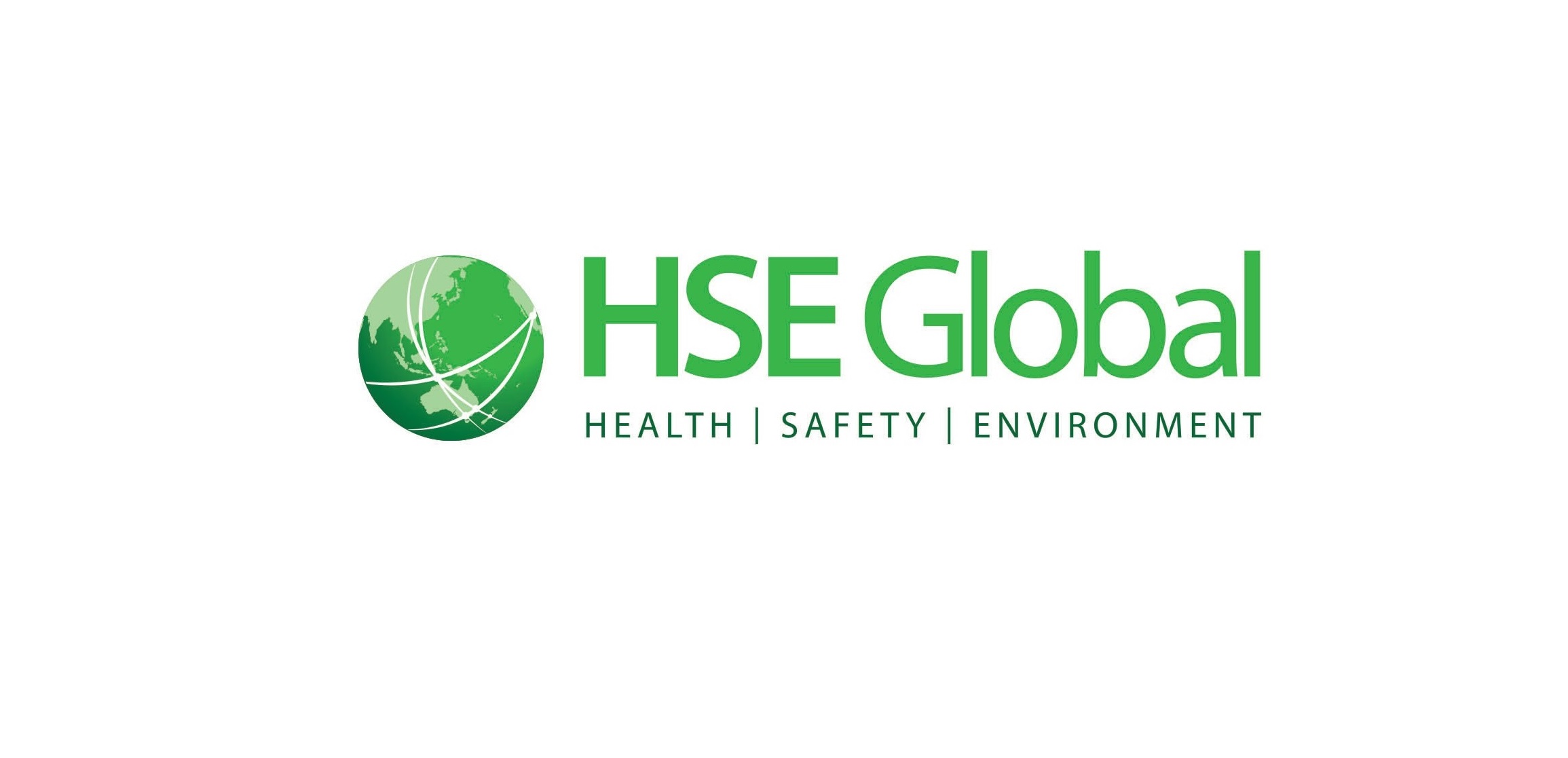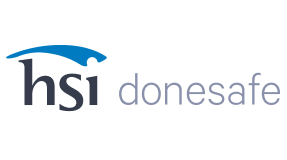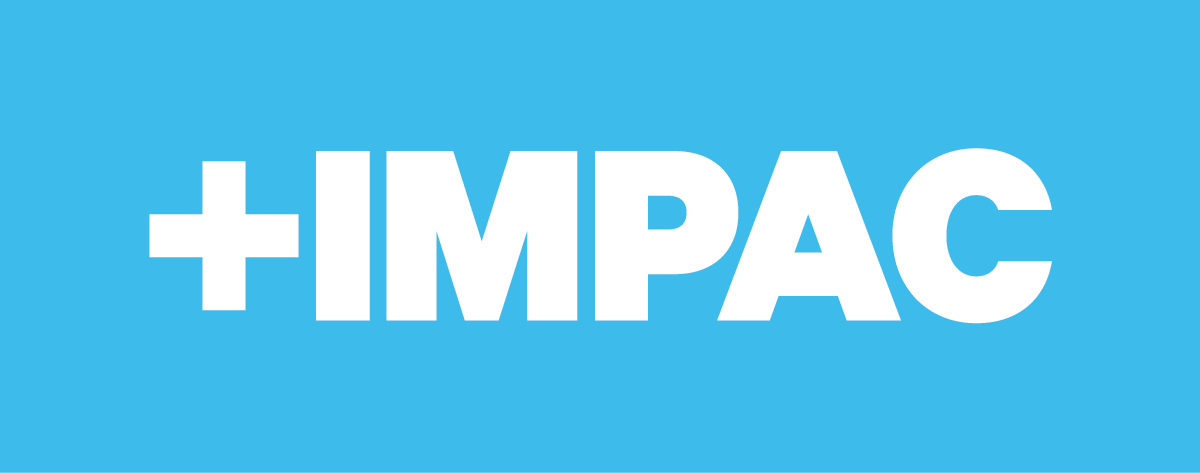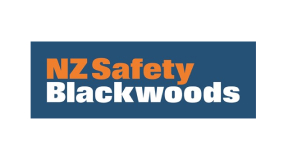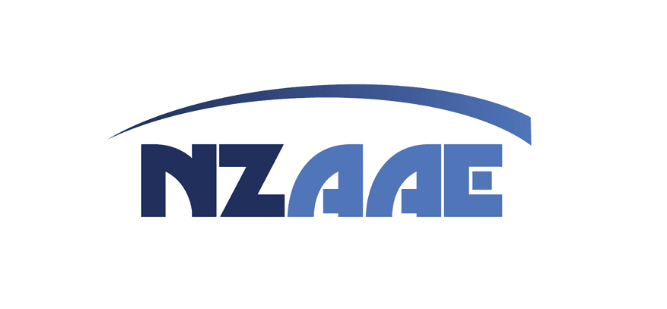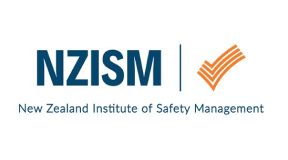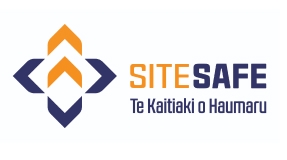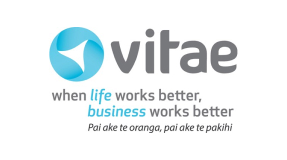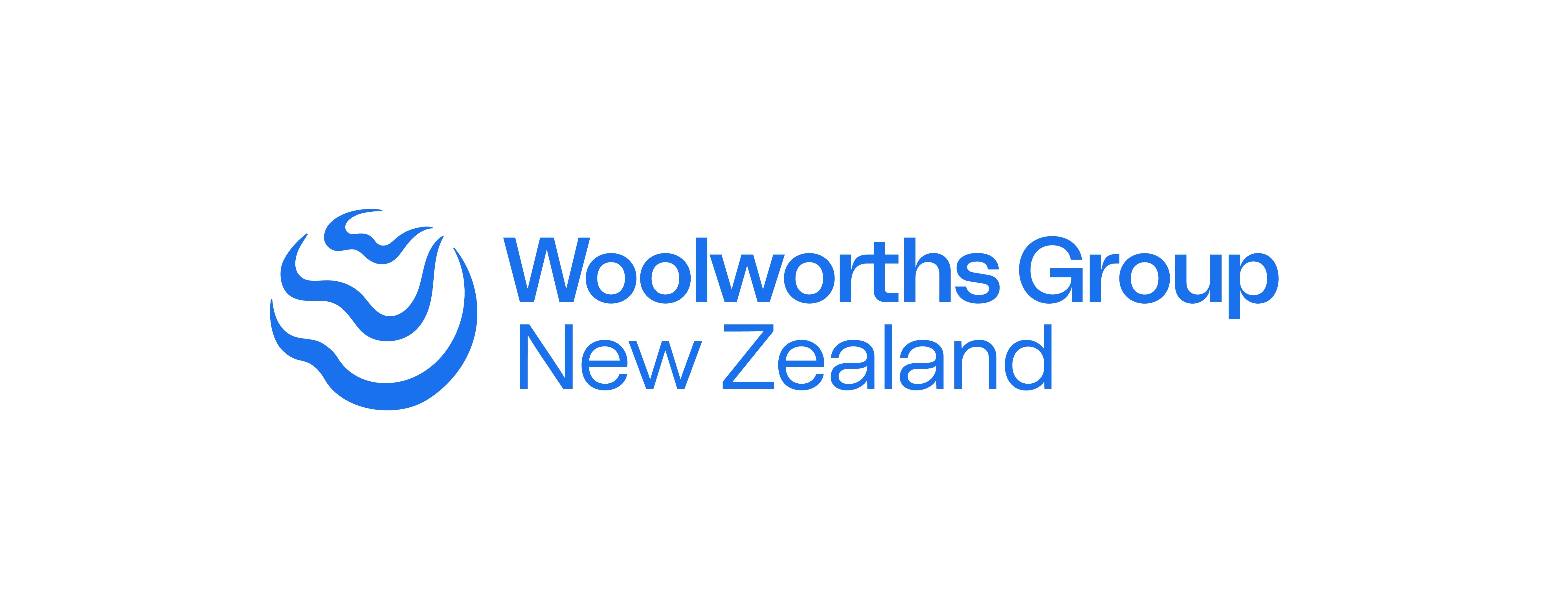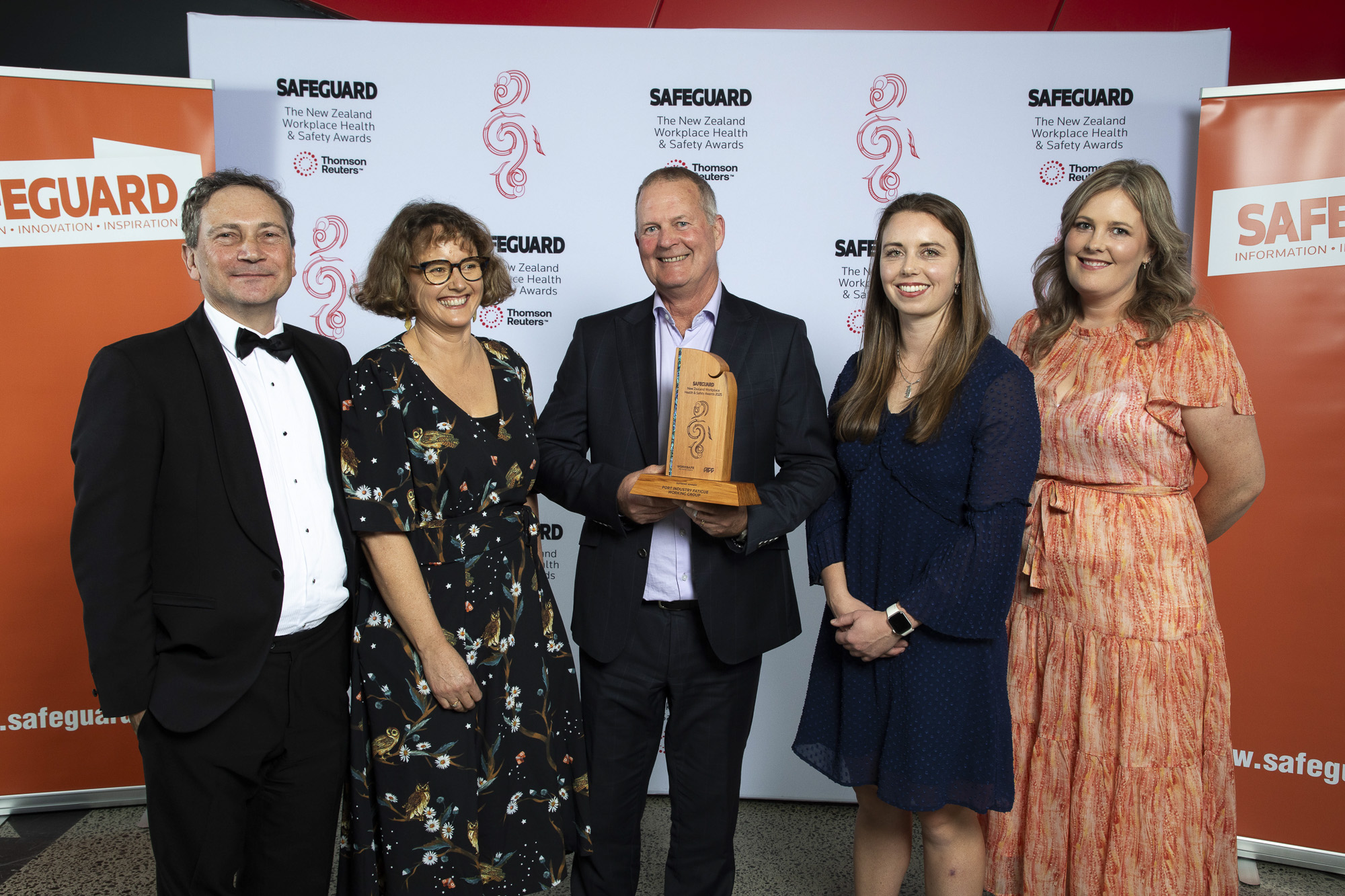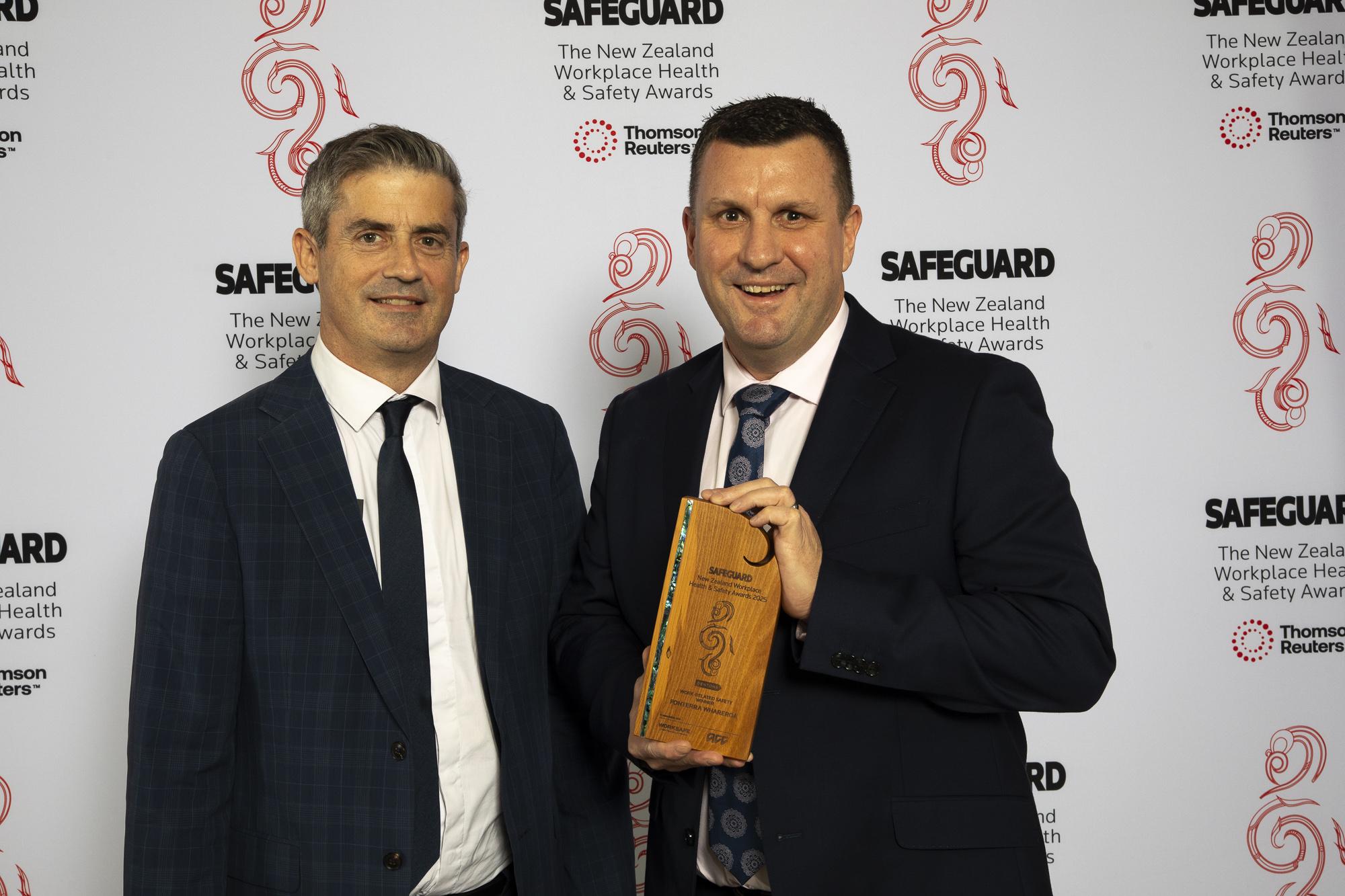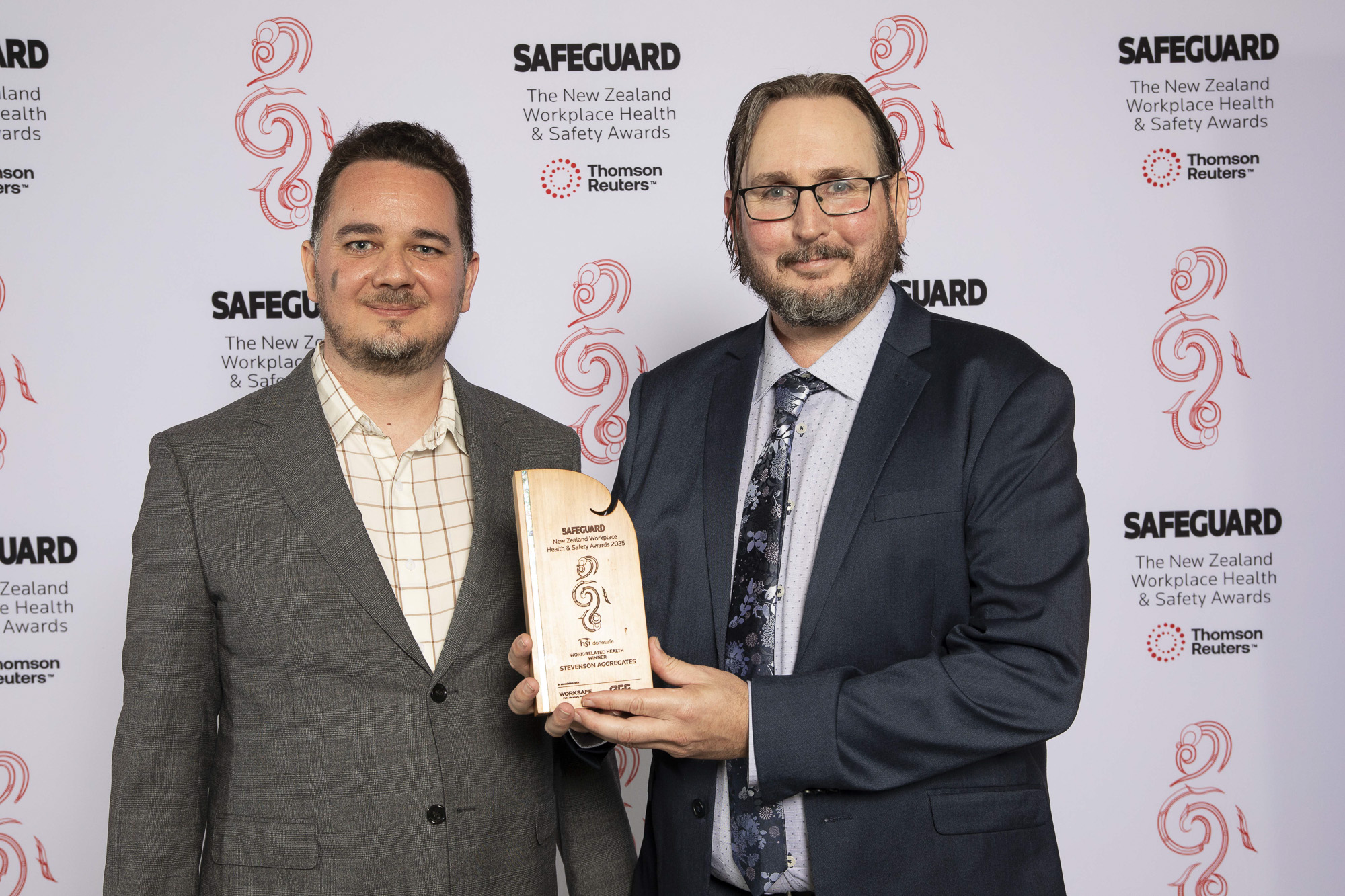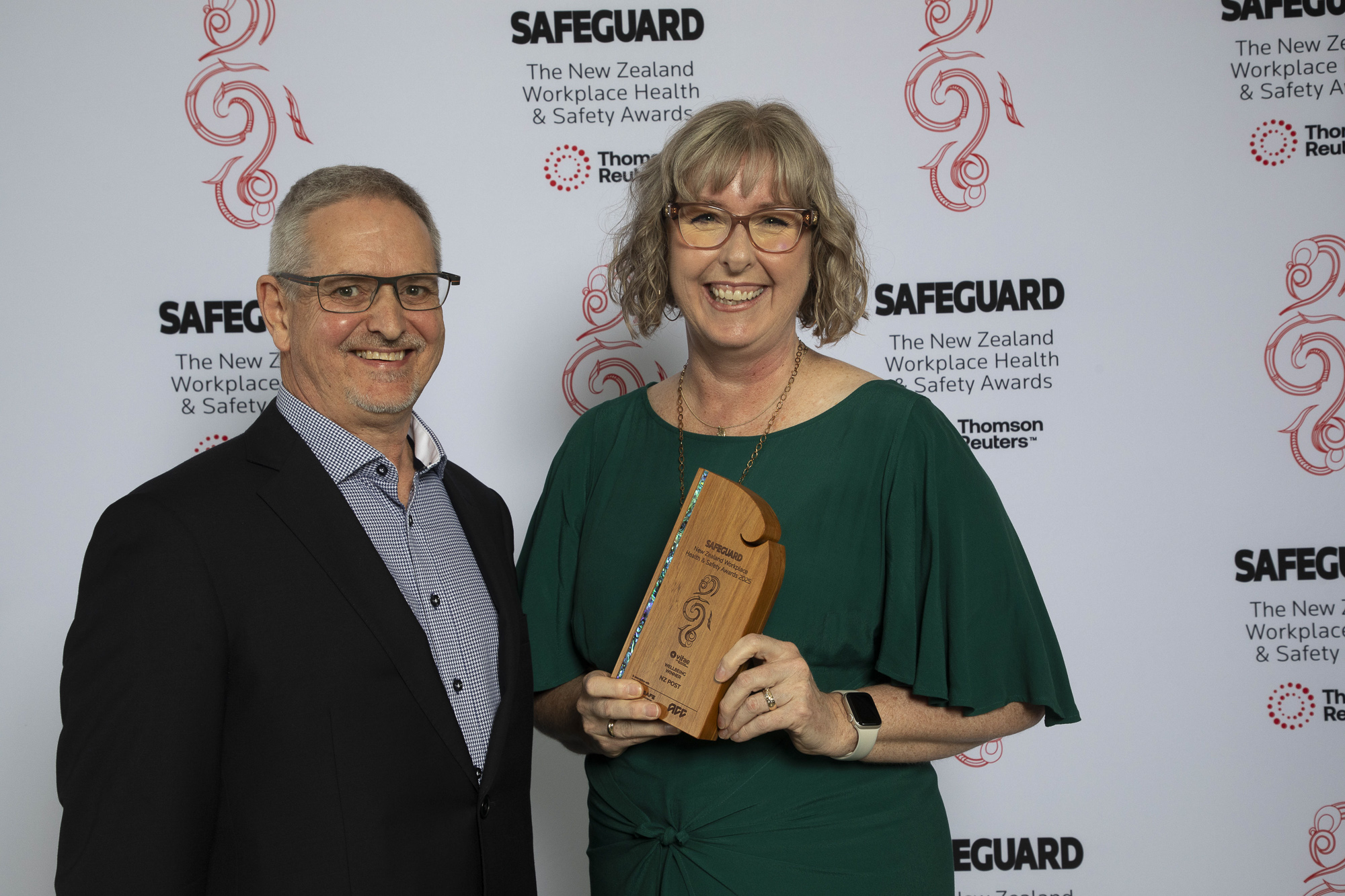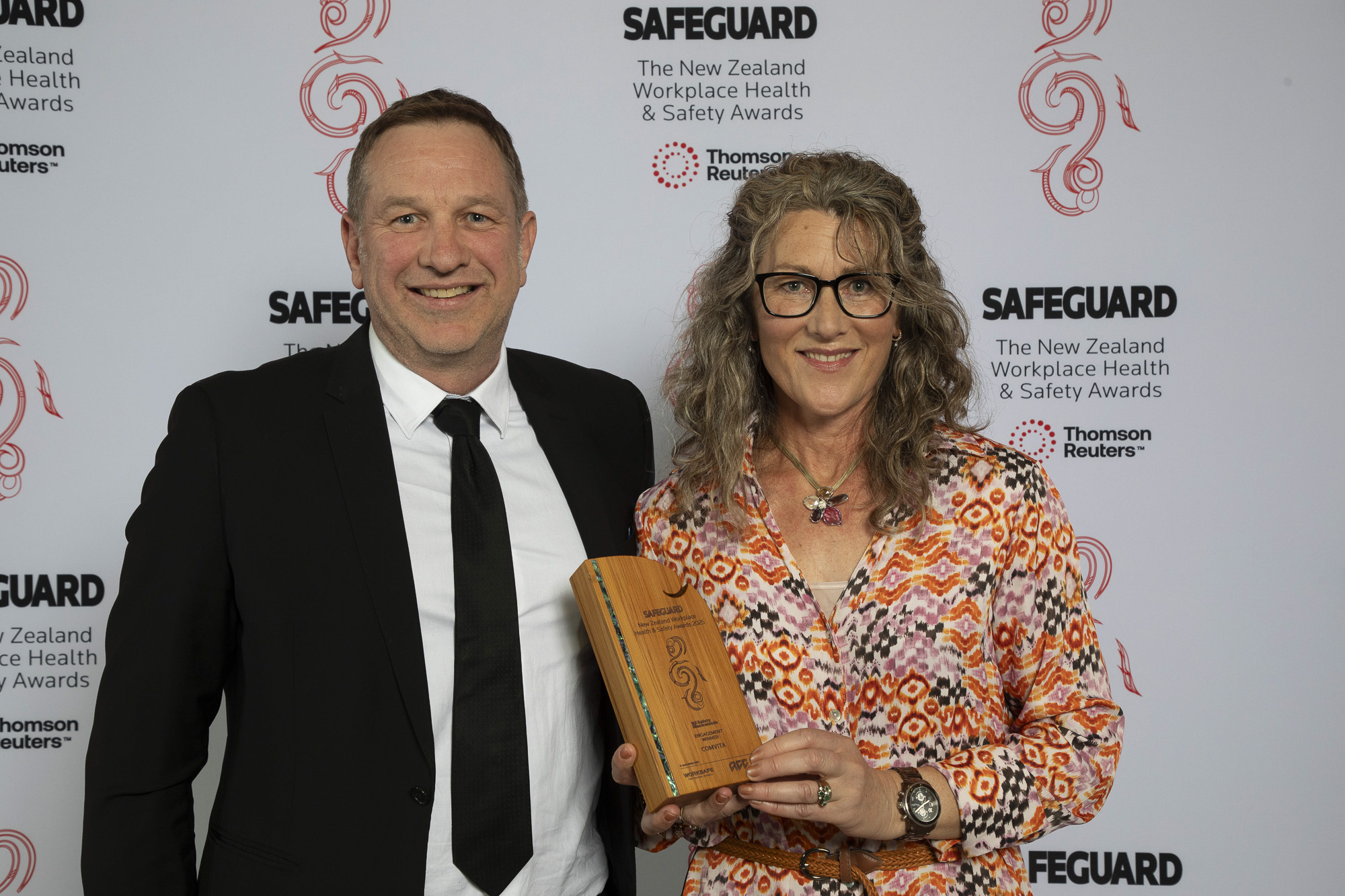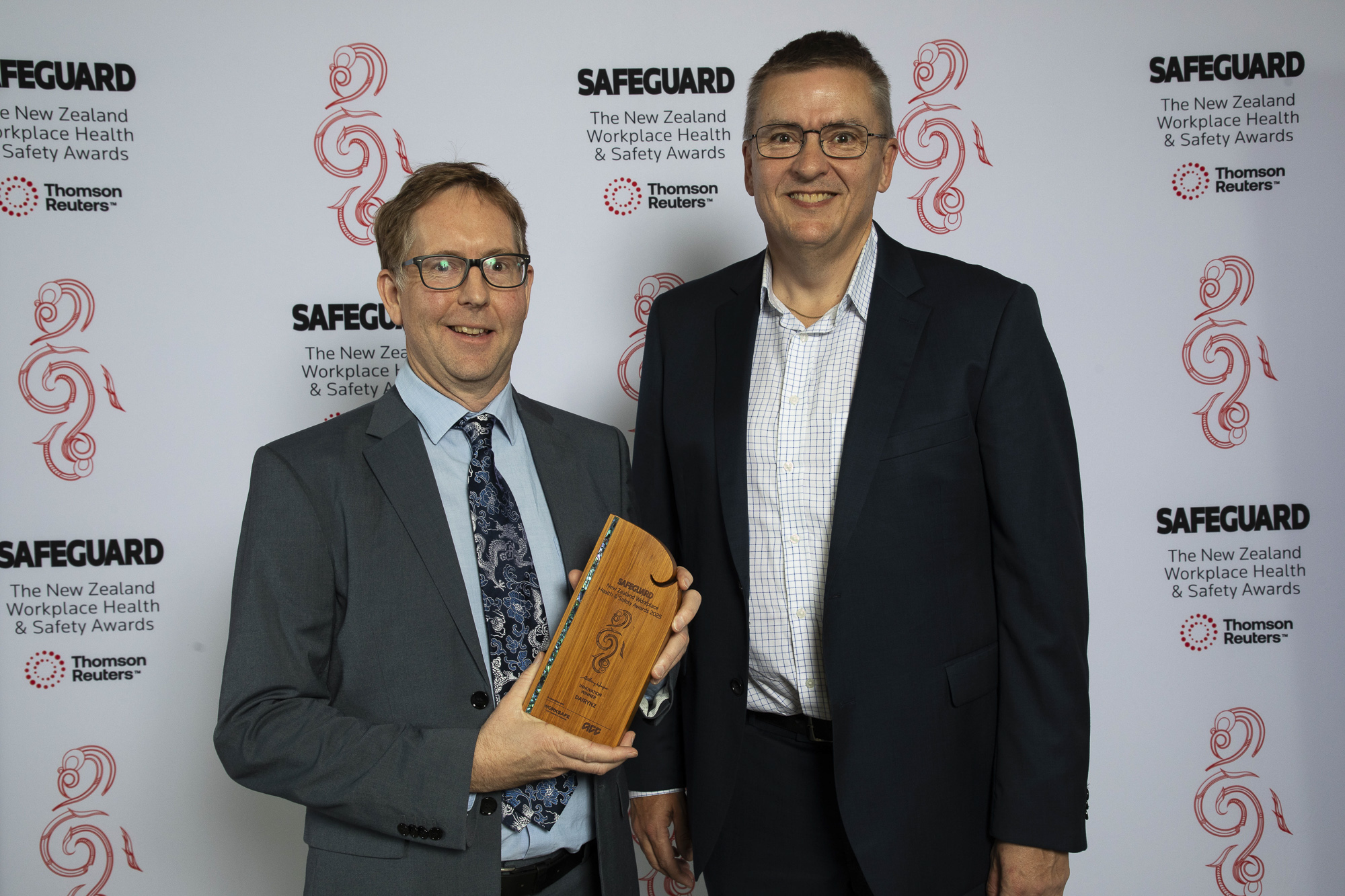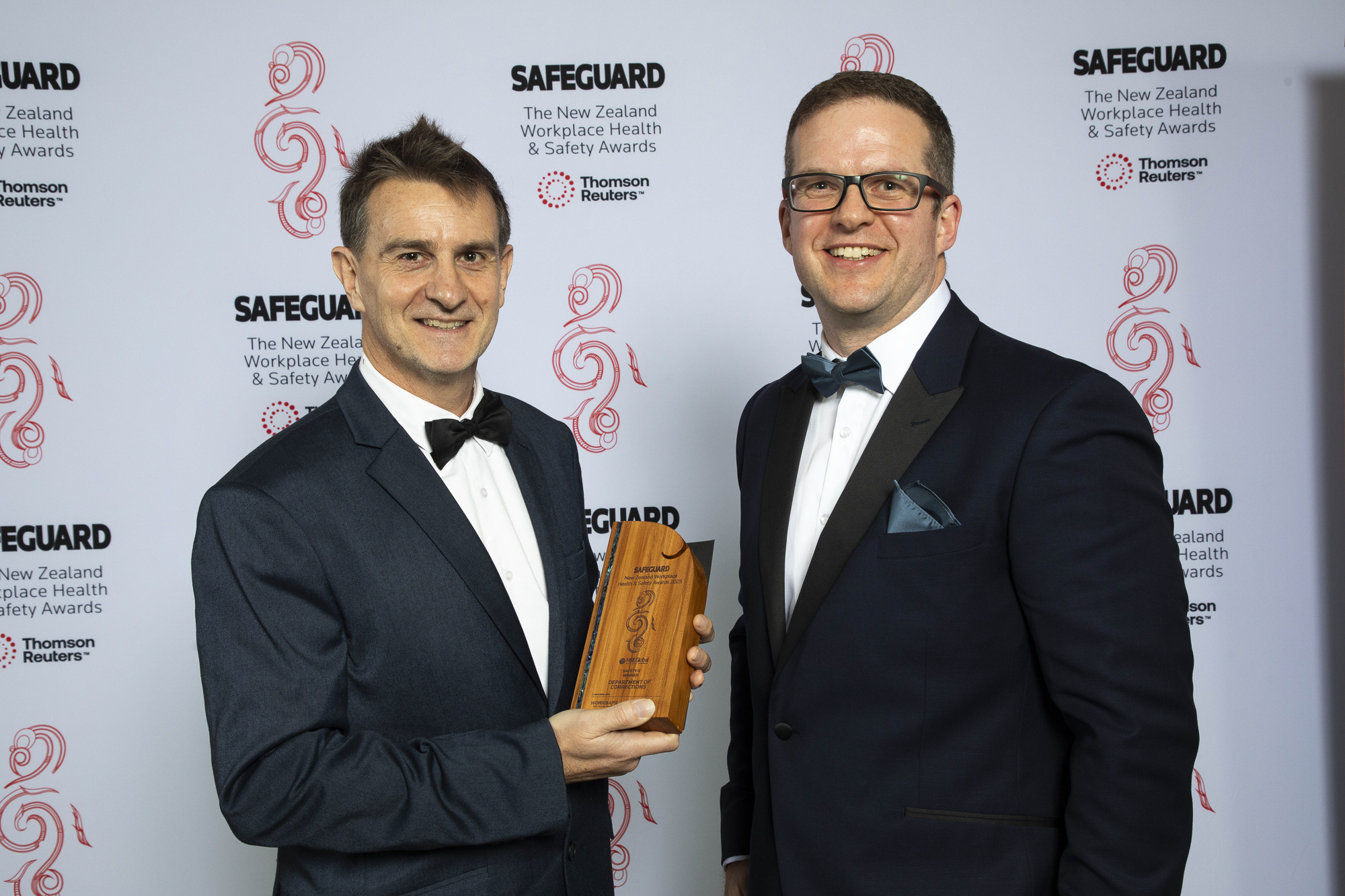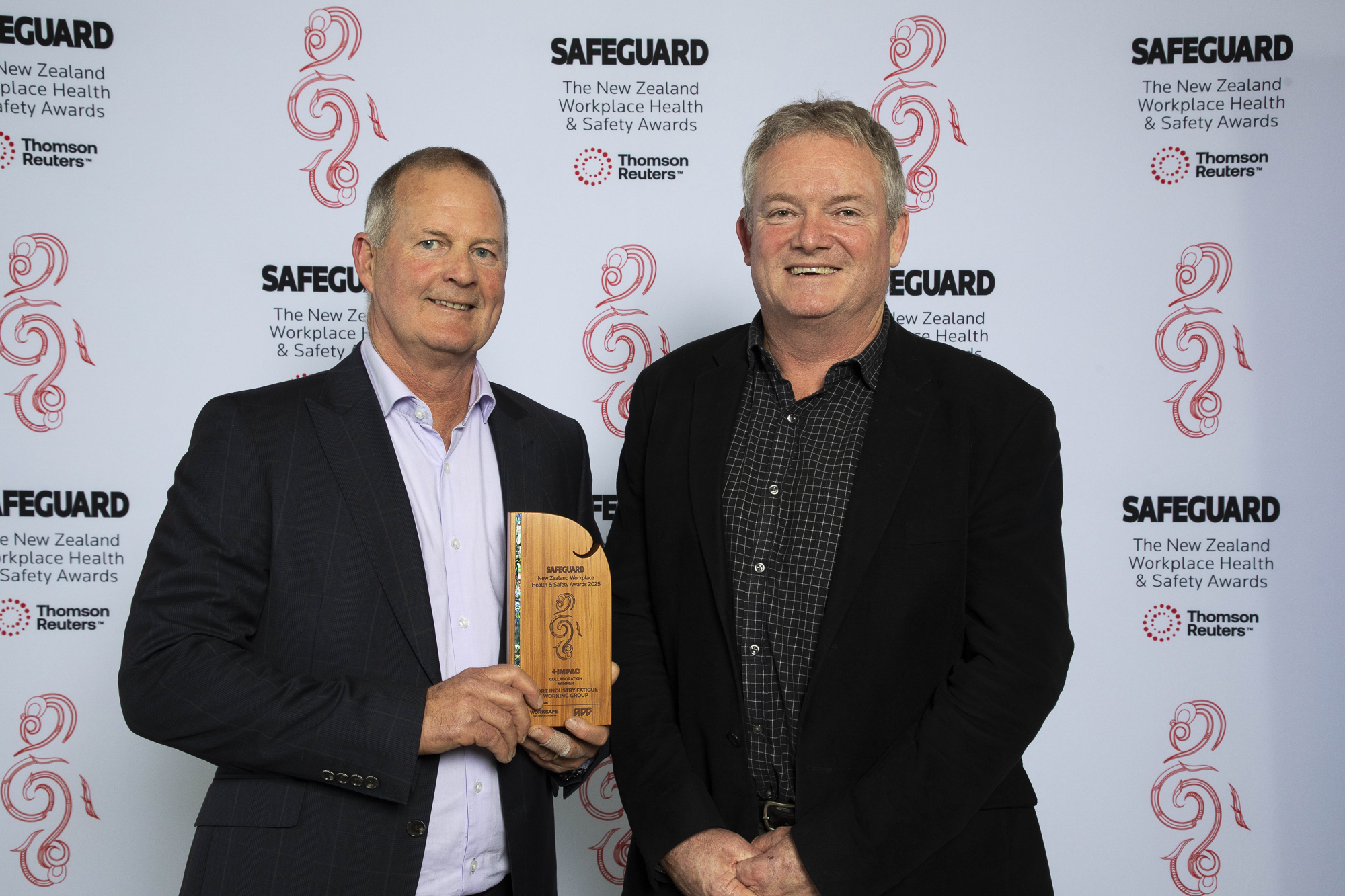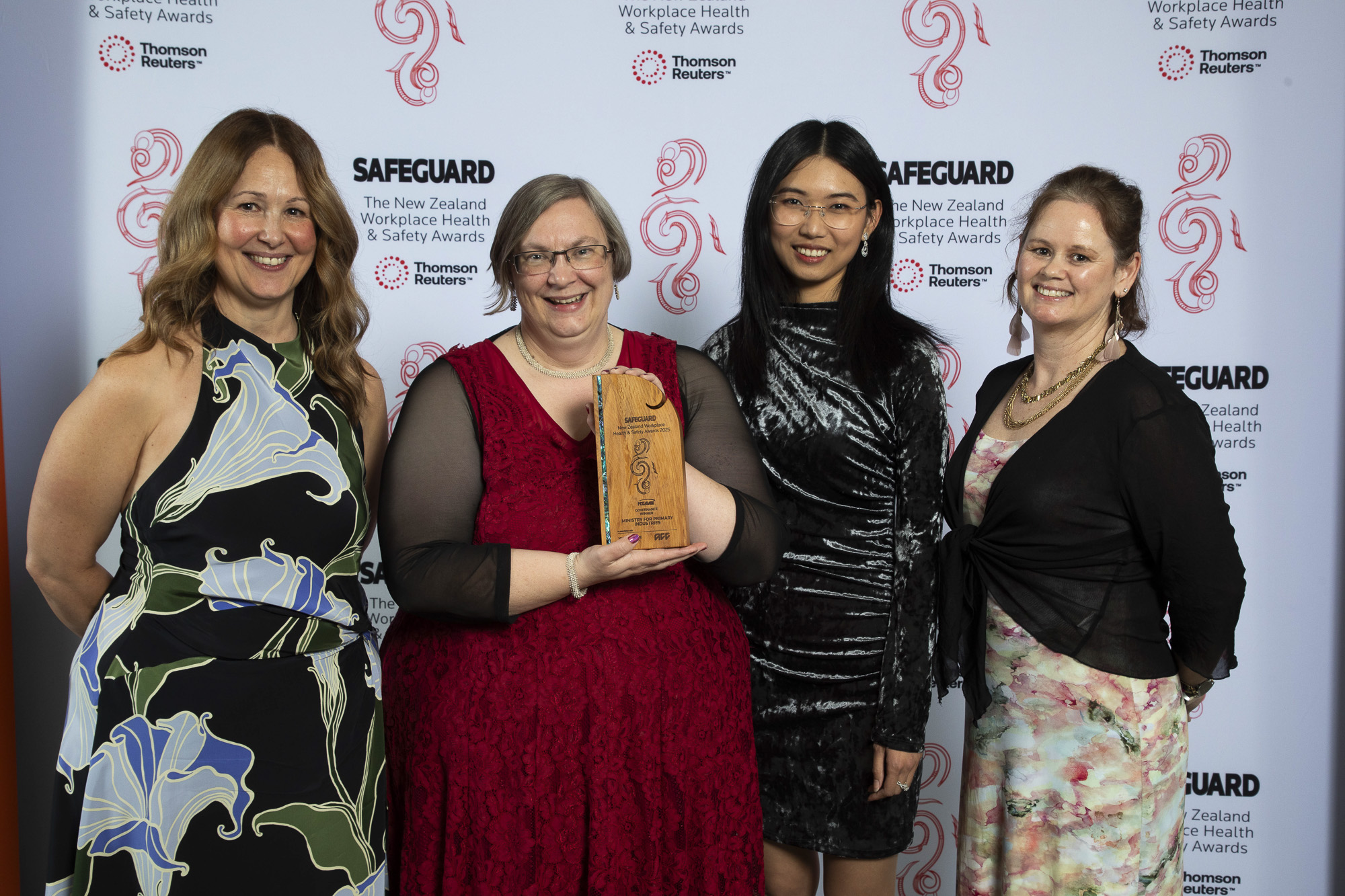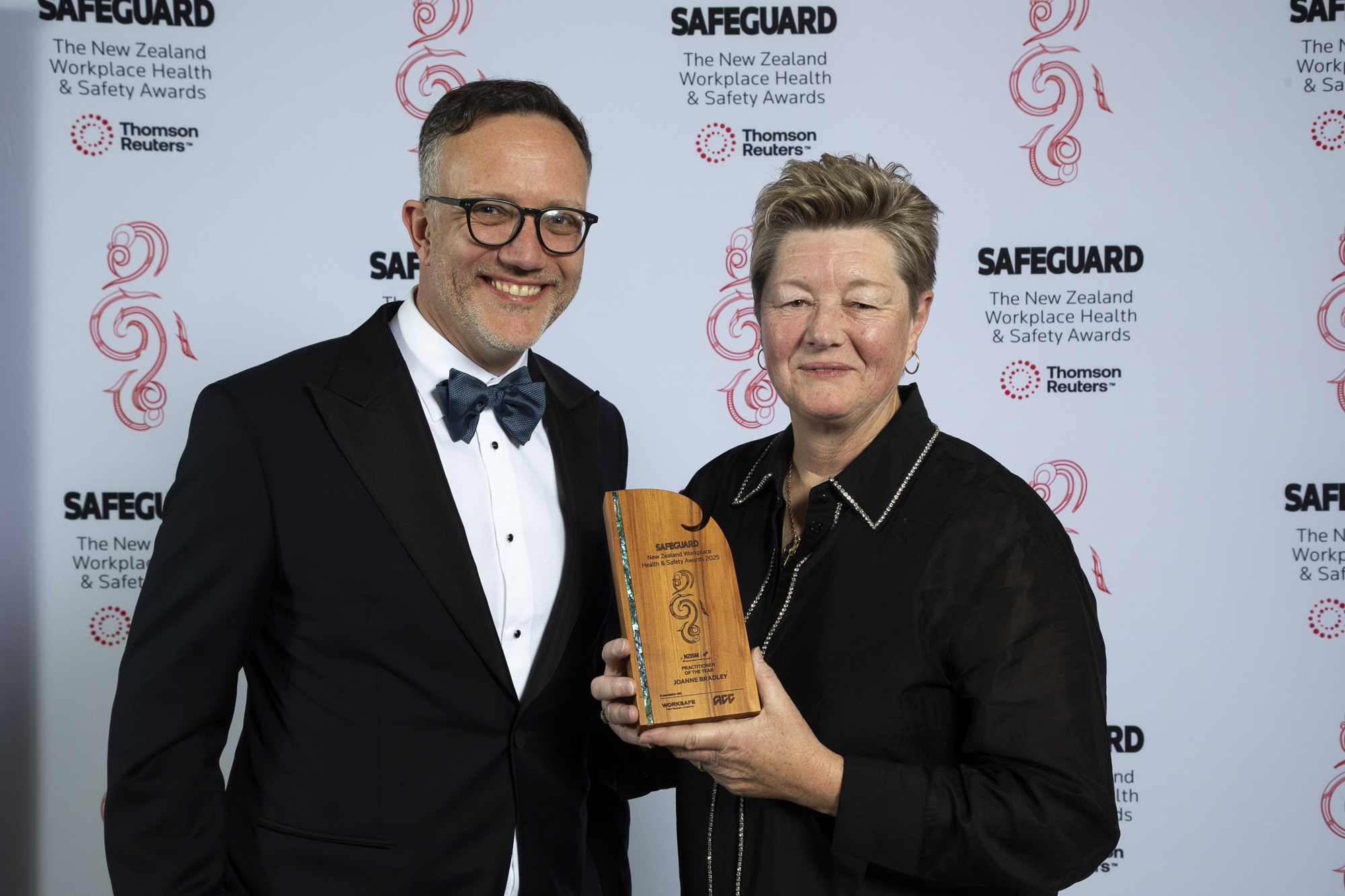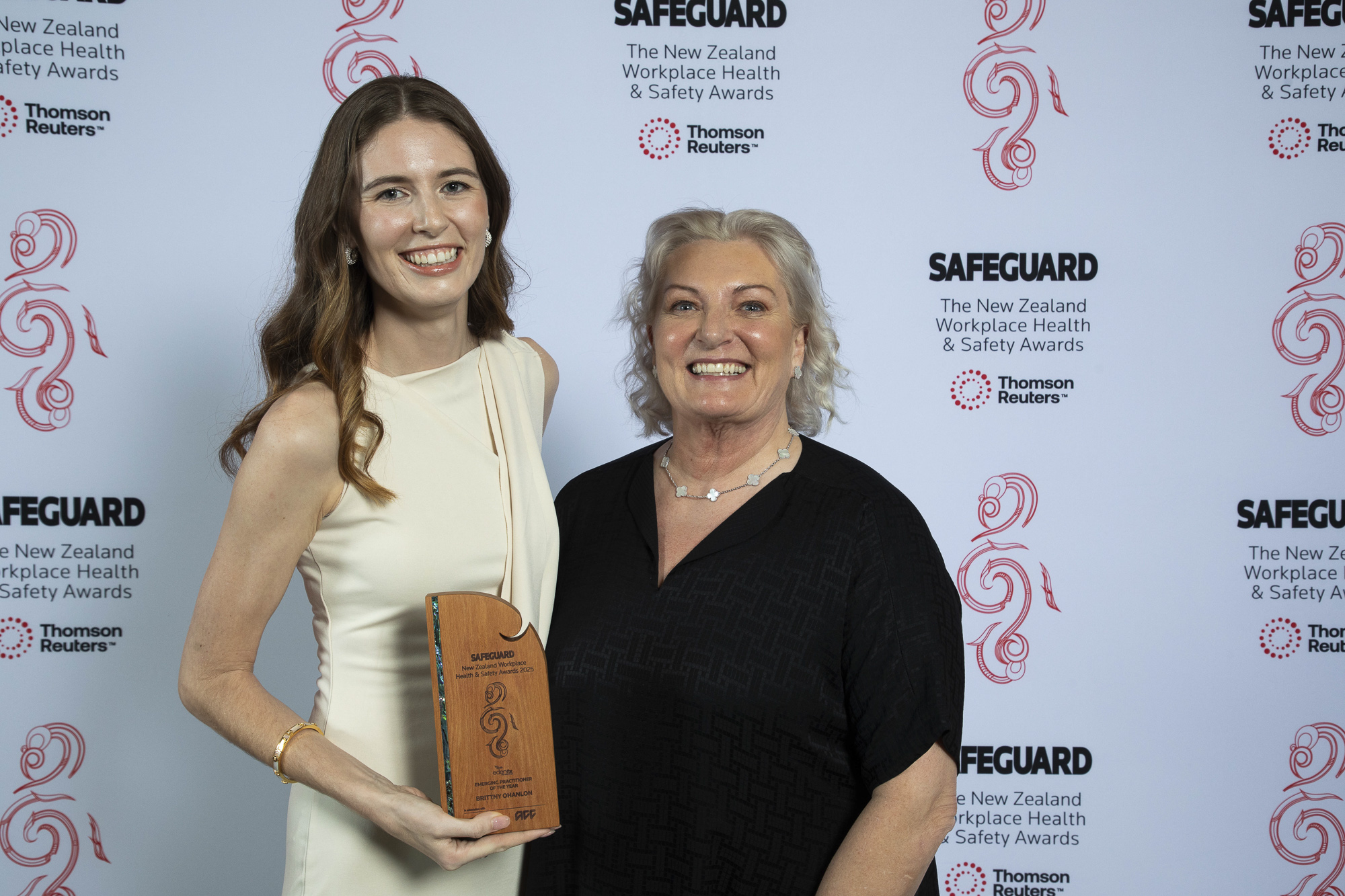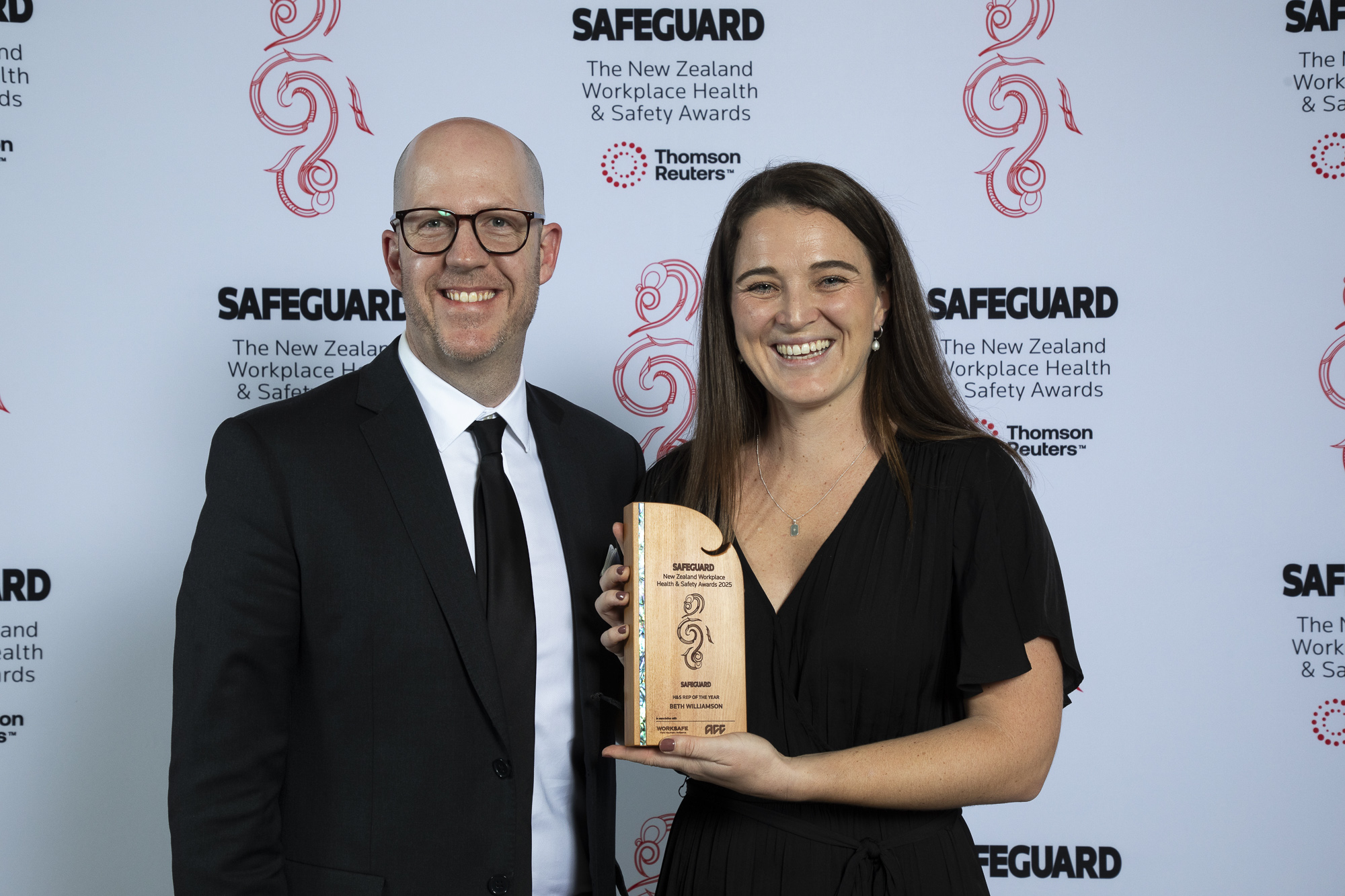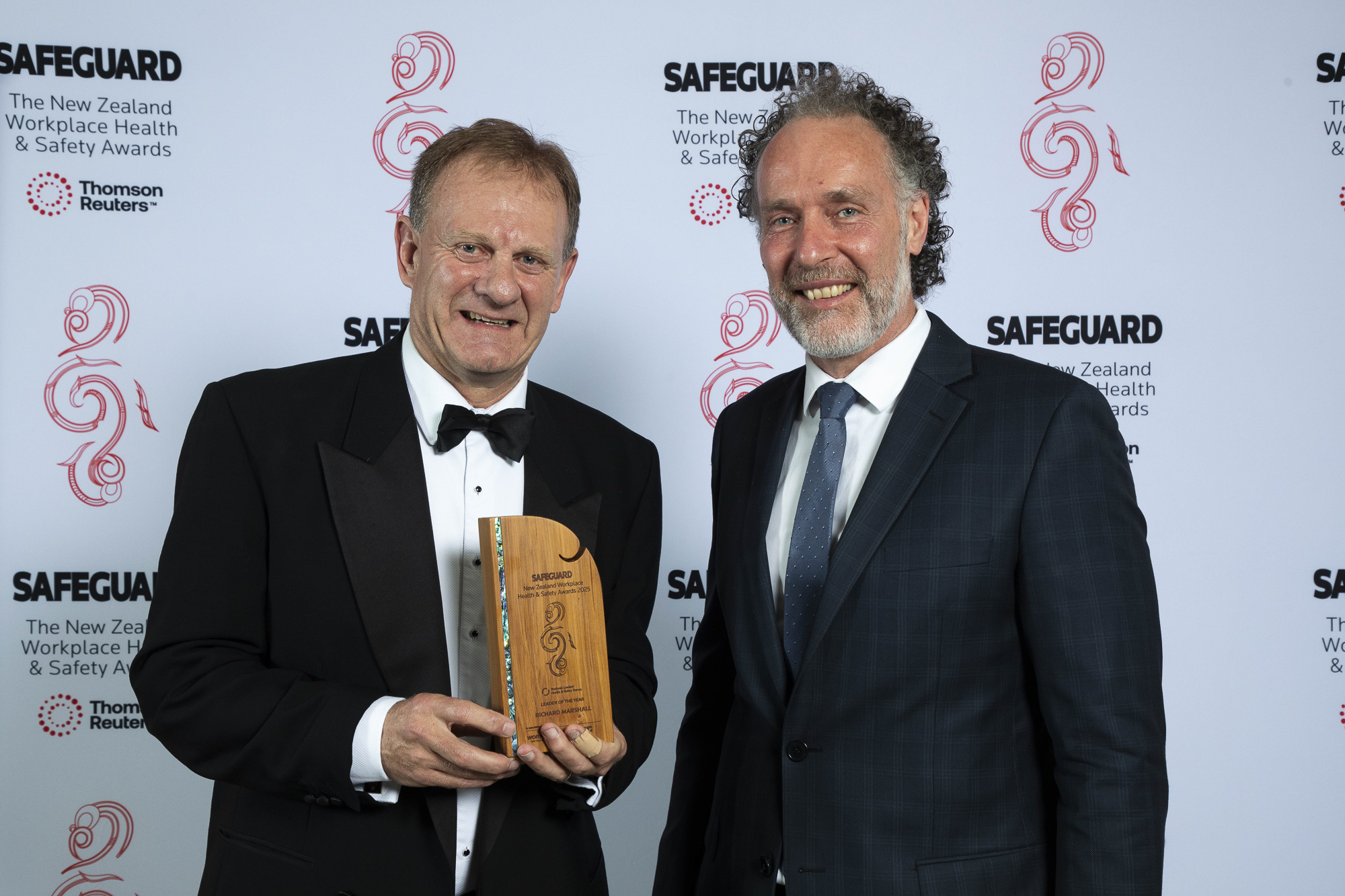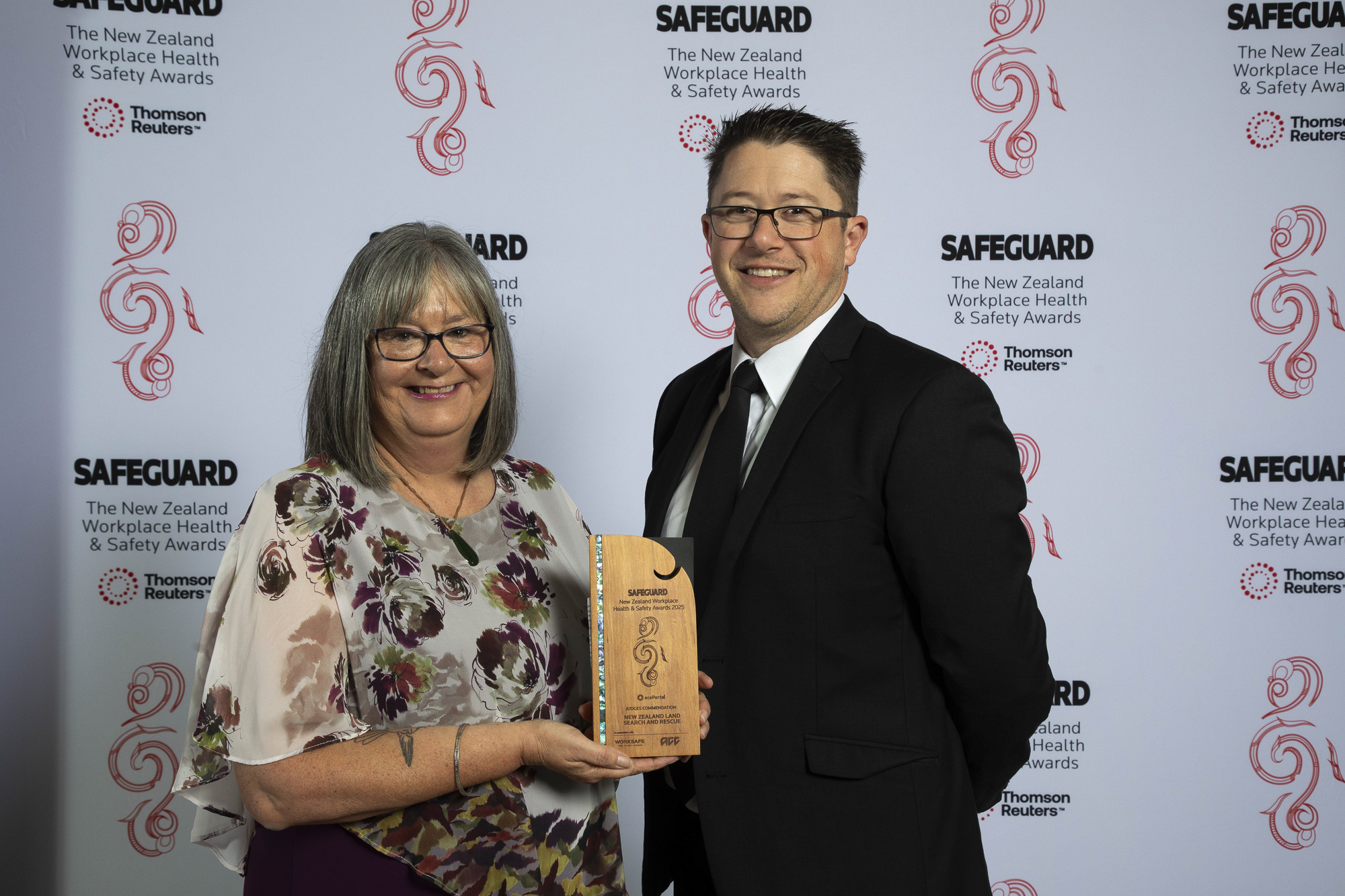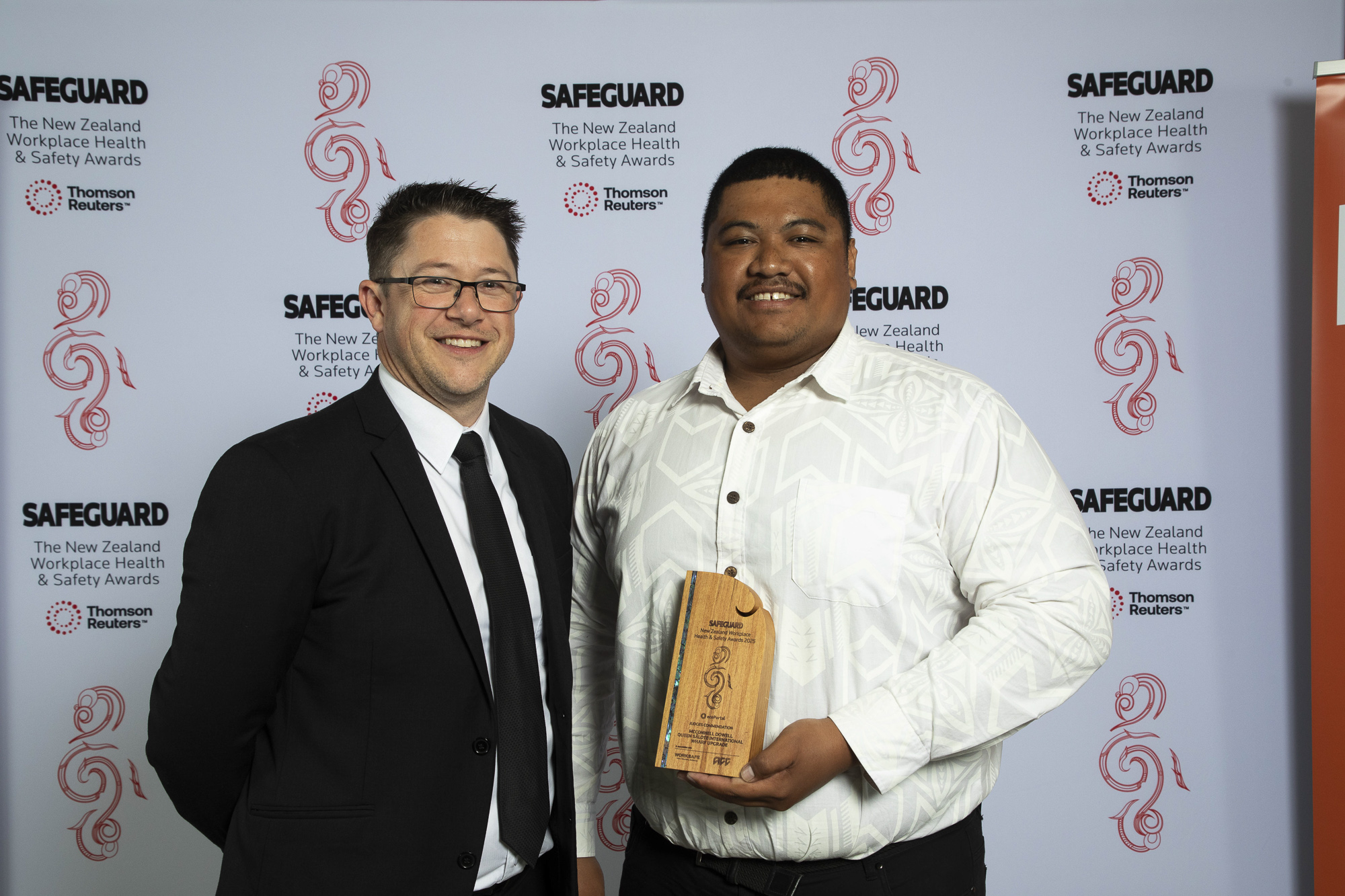The New Zealand Workplace Health and Safety Awards 2025
Winners announced
See all the 2025 WinnersCelebrating the best of health, safety and wellbeing in New Zealand
WINNERS ANNOUNCED!
The winners in the New Zealand Workplace Health and Safety Awards for 2025 have been decided.
The development of guidelines to manage the risk of worker fatigue at the country’s ports has seen the Port Industry Fatigue Working Group take overall honours at this year’s New Zealand Workplace Health and Safety Awards.
Fatigue is a significant risk given the 24/7 dynamic nature of port work. The Working Group saw 28 organisations work together in consultation with international experts to develop the sector’s first fatigue risk management system guidelines and an implementation plan to put them into effect.
Safeguard editor Peter Bateman, convenor of the five-person judging panel, said the Port Industry Fatigue Working Group’s efforts are an inspiration to other industry sectors seeking to tackle their own challenging risks.
“This sector group brought together a disparate group of players historically at loggerheads – port companies, stevedoring and marshalling companies, container depot operators, unions, a regulator – and united them in a successful effort to tackle a long-standing and previously intractable problem.”
The awards were presented at a gala dinner at the Viaduct Events Centre in Auckland on 17 June.
Lifetime Achievement Awards were presented to Felicity Lamm and George Adams.
The annual New Zealand Workplace Health & Safety Awards have been run since 2005. They are organised by Safeguard with the support of WorkSafe New Zealand and ACC.
2025 Winners announced!
Fatigue management initiative takes out national health and safety award.
Judged by a panel of five, the awards were presented at a gala dinner at the Viaduct Events Centre in Auckland on 17 June.
Hall of Fame Inductee
-
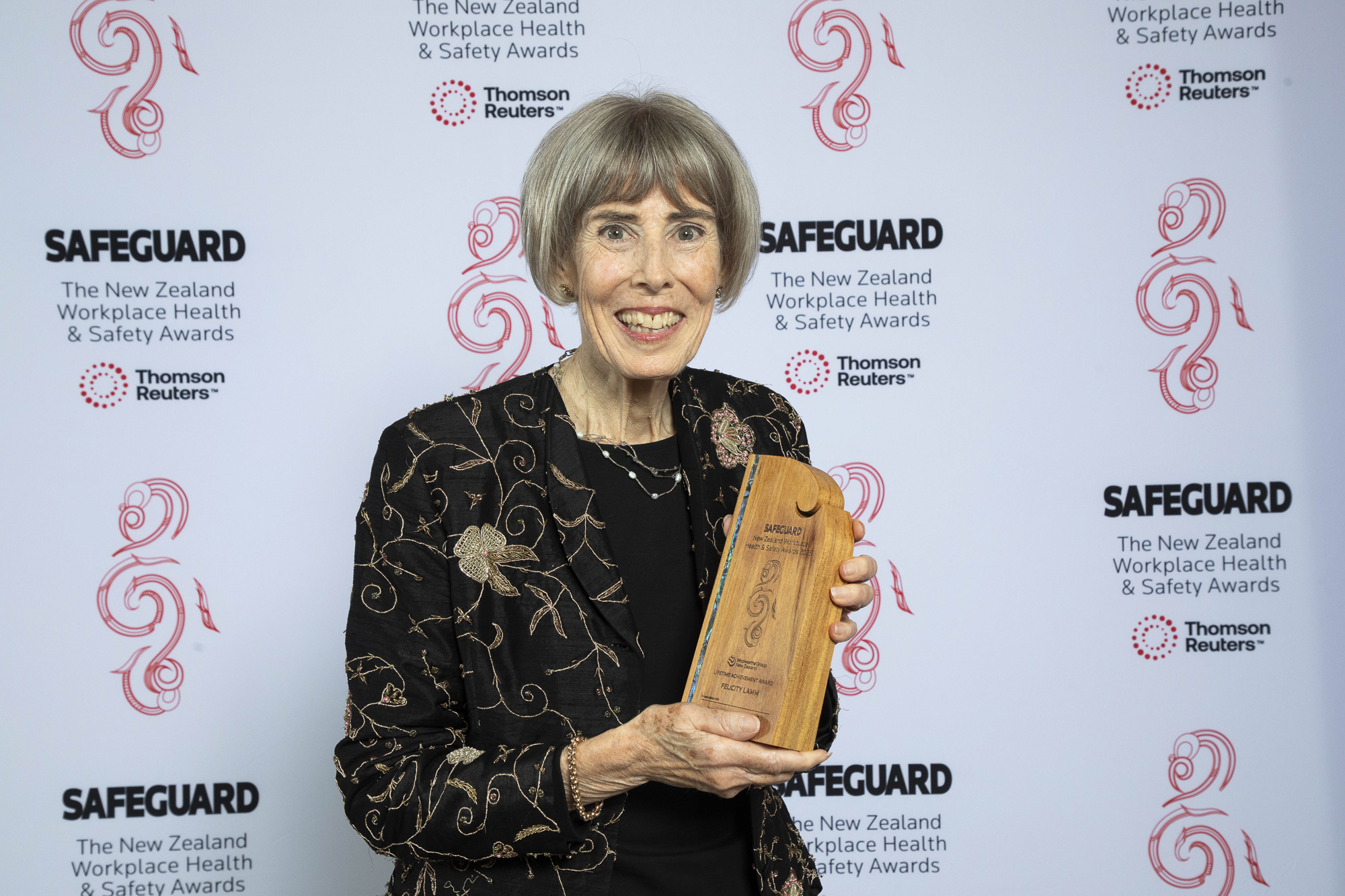
Felicity Lamm
An academic researcher, teacher and mentor, Felicity has for decades influenced how people think about health and safety and broader employment issues. Starting at the University of Auckland’s business school, she later joined AUT as co-director of the Centre for OHS Research, where she provided executive education programmes and completed more than 100 research reports, journal articles and book chapters. She supervised and mentored many Masters and Doctoral students, and led research clusters into the health & safety of vulnerable workers, in small businesses, and in specific industry sectors. Her networking ability has seen her support and collaborate with HASANZ, NZISM, CHASNZ, IOSH and the Business Leaders’ Health &Safety Forum. She has been an expert witness at enquiries into TranzRail and Pike River, and always taken an evidence-based approach. She is a cherished taonga of NZ’s health & safety ecosystem who has dedicated herself to improving conditions for workers.
-
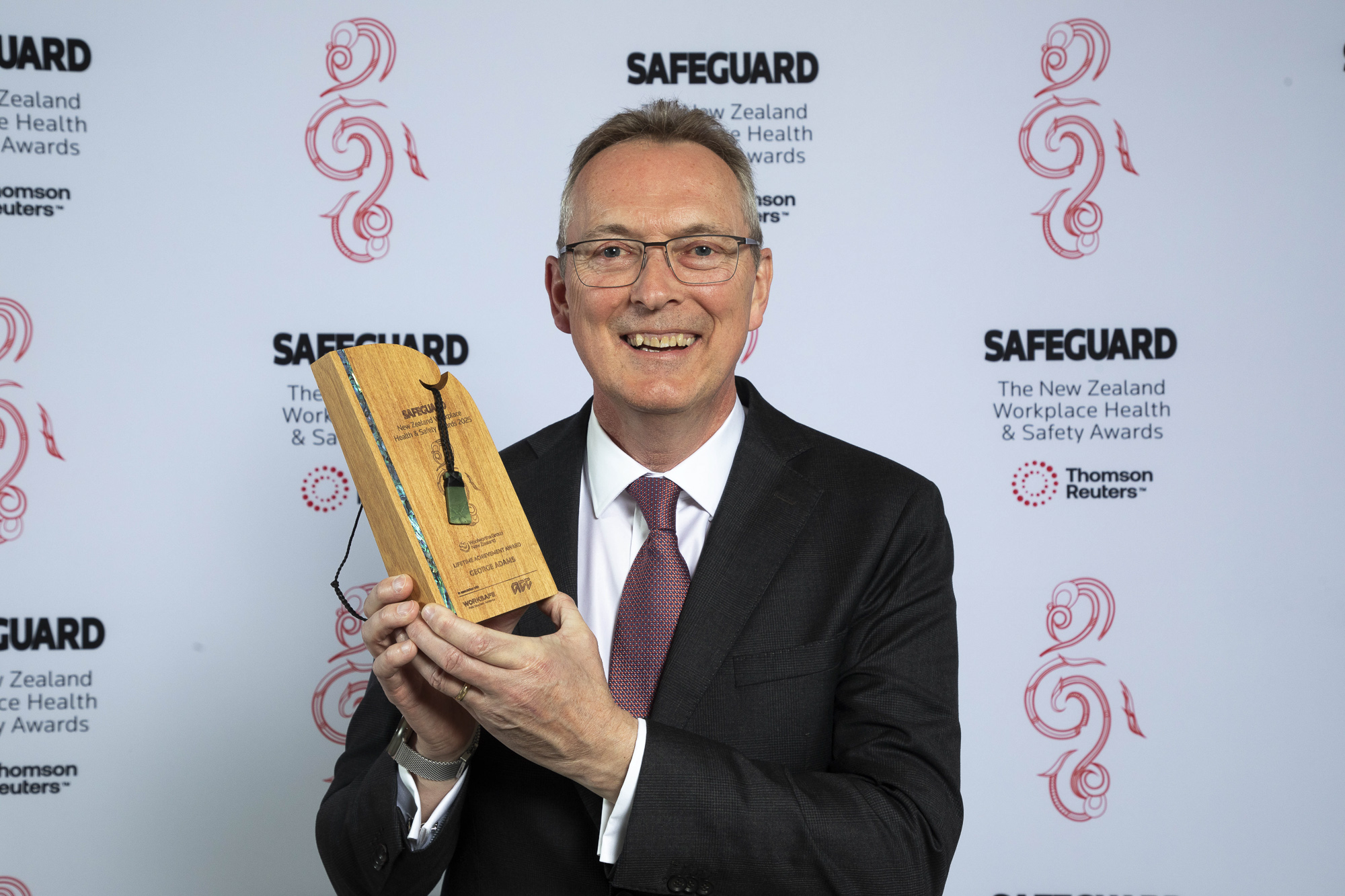
George Adams
George chaired the Business Leaders’ Health and Safety Forum for ten years until earlier this year. In this role he has supported hundreds of chief executives, directors and other senior leaders to better understand how health and safety starts at the top of an organisation – and that a healthy and safe workforce lifts productivity and boosts business outcomes. His leadership of the Forum has had a ripple effect, as the 435 members themselves influence hundreds of other businesses through their supply chains. George also chaired the Independent Forestry Safety Review, whose 2014 recommendations continue to influence the sector, and for seven years he chaired the Occupational Health Advisory Group to help WorkSafe with its health strategy. He is currently a member of Te Kahu Matai, WorkSafe’s leader’s advisory forum, and he co-delivers the Institute of Directors’ health and safety masterclass.
